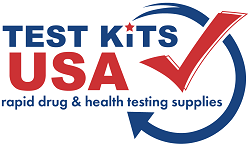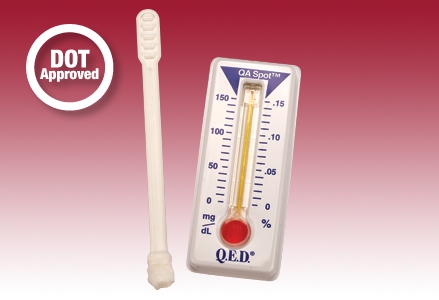Alcohol & Nicotine
Reliable & Accurate Alcohol and Nicotine Tests
We offer reliable and accurate tests for alcohol and nicotine. These products are an affordable option for employers, staffing agencies, alcohol treatment centers, and other organizations to easily and safely test for alcohol and nicotine use.
Saliva Alcohol Testing Strip Kits
Unlike other drugs, consumed alcohol is oxidized in the human body, meaning it is released as water and carbon dioxide. One part of the alcohol reacts with Fatty Acid Ethyl Esters (FAEEs). The sum of the concentrations of FAEEs is used as an indicator of alcohol consumption. Our rapid alcohol test strips also use saliva samples to provide accurate results in the detection of alcohol, which are more accurate than breathalyzer testing as saliva alcohol content actually has the same sensitivity as blood alcohol content. Alcohol test strips test for BAC, changing color based on BAC levels up to .30%.
EtG Urine Alcohol Test
Another technique that we provide to detect alcohol is an advanced test that uses modern technology to show results of ehtyl glucuronide. The onsite alcohol urine test that detects ethyl glucuronide, better known as EtG, is a metabolite of alcohol. EtG is detectable in urine and indicates that alcohol has recently been consumed within the last 3 or 4 days and actively used by caseworkers and courts to monitor alcohol abstinence. This urine alcohol test can provide detection in a longer time frame even if ethanol isn’t measurable. EtG can be detected up to 80 hours even after ethanol is expelled from the body.
Cotinine Test Kit
For the detection of tobacco products our nicotine test kit works by detecting a metabolite called cotinine. It is a biomarker for exposure to tobacco smoke and has a detection life span of several days. Cotinine can be detected in the urine, blood, and saliva. A cotinine urine test will measure the level of the metabolite in a sample, which will determine whether a person has been exposed to tobacco smoke.
- Cotinine levels under 10 ng/mL are considered to be consistent with no active smoking.
- Values of 10 ng/mL to 100 ng/mL are associated with light smoking or moderate passive exposure.
- Levels of 200 ng/mL are indicative of active smokers.
There are no products listed under this category.




